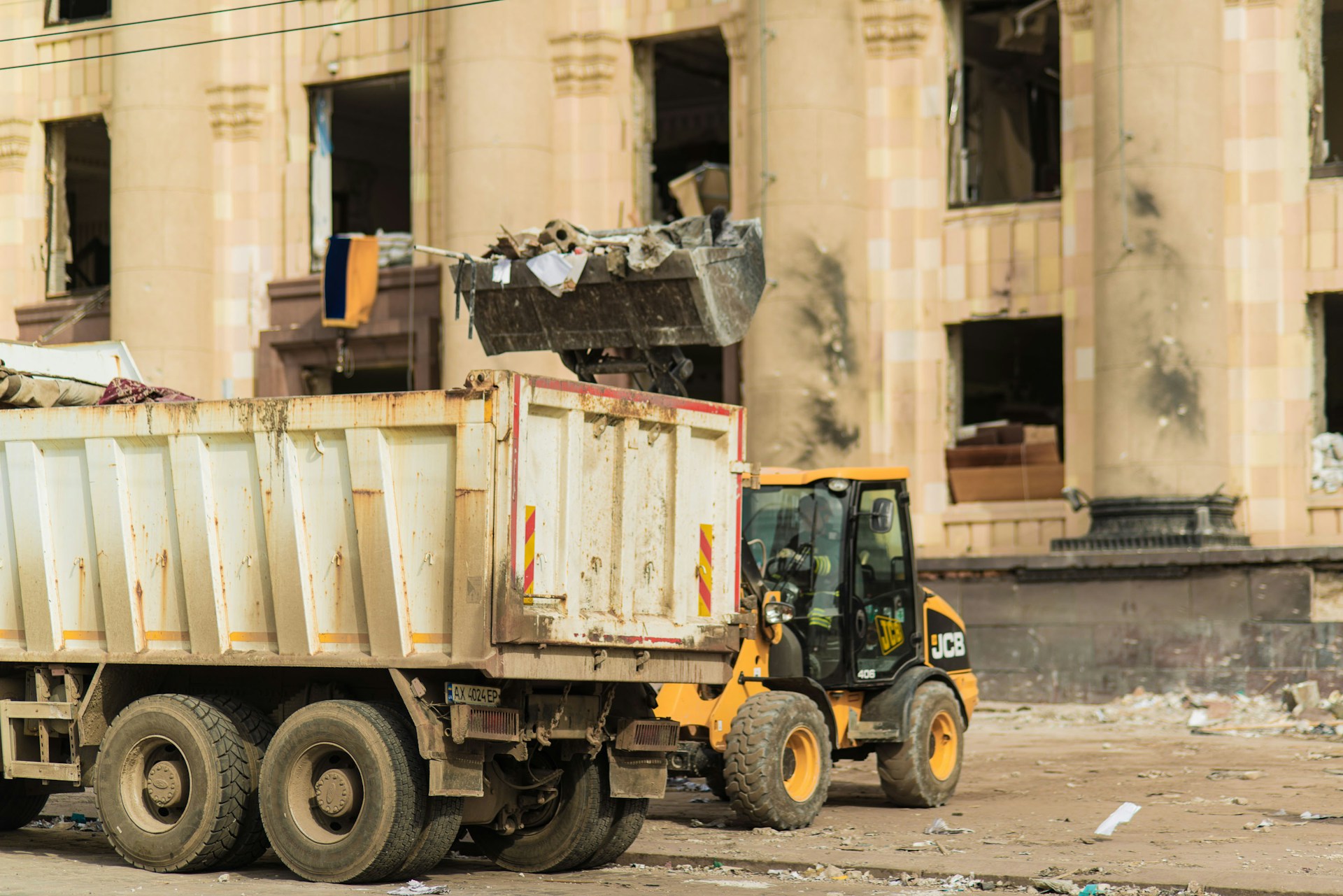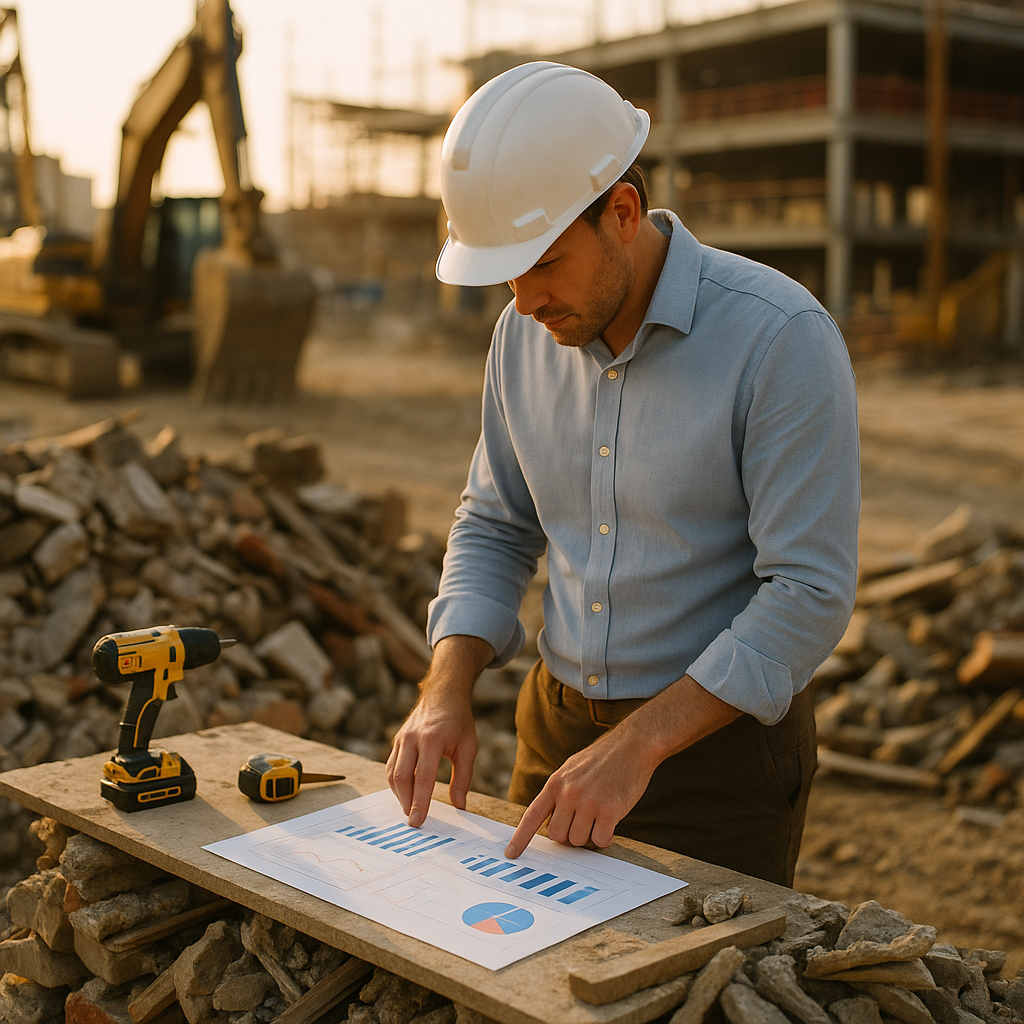5901 Botham Jean Blvd, Dallas, TX 75215
The Growing Challenge of Industrial Construction Waste
June 21, 2025Every year, the global construction industry generates over 1.3 billion tons of waste, accounting for nearly one-third of all landfill waste worldwide. Industrial construction waste is now one of the most pressing environmental challenges. Projects from manufacturing facilities to power plants produce vast amounts of debris that threaten ecosystems and strain economic resources.
The environmental impact is significant. Construction and demolition activities consume valuable raw materials, release greenhouse gases, and contaminate soil and water supplies. Economically, improper waste management results in higher project costs, regulatory penalties, and missed opportunities for material recovery and reuse. As industrial development accelerates globally, these issues will intensify without intervention.
Beyond environmental concerns, the construction industry faces growing regulatory pressure and resource scarcity. Many regions now enforce strict waste diversion requirements, prompting companies to adopt more sustainable practices. Forward-thinking organizations realize that effective waste management is not just an environmental obligation—it offers a competitive advantage by enhancing operational efficiency and project profitability.
What Are the Key Components of Effective Industrial Construction Waste Management?

Effective industrial construction waste management relies on three interconnected components that reduce environmental impact while enhancing resource efficiency. Each element is crucial in developing a sustainable waste management system that benefits both companies and the environment.
On-Site Waste Segregation
On-site waste segregation is the foundation of effective waste management in industrial construction. This involves sorting waste materials at their source into categories based on composition and recycling potential. Construction sites generate a variety of waste streams, including concrete, metals, wood, glass, and plastics.
Proper segregation requires clearly marked containers for different material types. Each waste stream needs dedicated collection points with appropriate signage to guide workers. This approach prevents cross-contamination between recyclable and non-recyclable materials.
Worker training is crucial for successful segregation practices. When crew members understand the importance of proper sorting and receive clear instructions on waste handling protocols, compliance rates improve. Regular audits of waste containers help maintain segregation standards and identify areas needing improvement.
- Set up separate, clearly labeled containers for concrete, metal, wood, plastics, and general waste
- Position waste collection stations strategically throughout the construction site
- Conduct regular training sessions to ensure all workers understand sorting requirements
- Perform weekly audits to monitor segregation compliance
Recycling and Reuse Strategies
Once materials are segregated, effective recycling and reuse strategies become possible, transforming potential waste into valuable resources. Concrete and masonry can be crushed and repurposed as aggregate for new construction or road base material. Metal components have high recycling value and can be processed into new products.
Wood waste offers multiple reuse opportunities when uncontaminated by hazardous materials. It can be repurposed for temporary structures, ground into mulch, or processed into engineered wood products. Even materials like gypsum from drywall can be recycled into new drywall or used as soil amendments.
Developing partnerships with local recycling facilities enhances these efforts. These relationships ensure proper processing of materials and often reduce disposal costs compared to landfilling. Some projects even incorporate on-site crushing and processing equipment for high-volume materials like concrete, eliminating transportation costs and reducing carbon emissions.
Lean Construction Principles
Lean construction principles focus on minimizing waste by optimizing the entire construction process. This methodology, adapted from manufacturing efficiency practices, involves identifying and eliminating activities that consume resources without adding value.
Just-in-time material delivery is a key lean practice that reduces excess inventory and associated waste. By scheduling deliveries to coincide with installation timing, materials spend less time on-site, reducing the risk of damage or deterioration and ultimately decreasing waste generation.
Prefabrication and modular construction techniques also support waste reduction goals. These methods allow for precise manufacturing in controlled environments, significantly reducing material offcuts and waste compared to traditional on-site fabrication. The controlled production environment also enhances quality control, further reducing waste from errors or rework.
Data-driven decision-making is another pillar of lean construction. By tracking waste generation metrics and analyzing patterns, project managers can identify problem areas and implement targeted improvements. This continuous improvement mindset helps refine waste management practices throughout the project lifecycle.
Implementing these three components—on-site segregation, recycling strategies, and lean principles—creates a comprehensive approach to industrial construction waste management. Integrating these practices reduces environmental impact and typically improves project economics through decreased disposal costs and more efficient material use.
How Can Technology Enhance Industrial Construction Waste Solutions?

Modern technologies are transforming industrial construction waste management. Advanced sorting systems with optical sensors can precisely identify and separate materials in waste streams. These systems scan construction debris and automatically categorize materials like concrete, wood, metal, and plastics, significantly reducing manual sorting time and improving recovery rates.
AI-powered robots are among the most promising innovations in construction waste management. These intelligent machines use computer vision and machine learning to differentiate between waste types. A recently developed sorting robot can distinguish various kinds of construction and demolition waste, operating continuously without the fatigue or safety concerns associated with human workers. This technology not only improves sorting accuracy but also increases processing capacity.
Building Information Modeling (BIM) technology is enhancing construction waste management from the planning stage. BIM creates detailed digital representations of buildings before construction begins, allowing teams to accurately estimate material needs and reduce overordering. Studies show BIM-based systems can predict demolition waste with up to 97% accuracy, making it easier to plan for material recovery and recycling.
Predictive analytics, powered by AI, further enhances waste reduction strategies. By analyzing data from previous projects, these tools forecast material requirements with high precision, preventing the common problem of excess ordering that leads to surplus materials becoming waste. Construction companies using AI-driven predictive analytics report significant reductions in material waste and associated disposal costs.
Real-time tracking systems monitor material usage throughout construction projects. Using digital tools, project managers can maintain optimal inventory levels and prevent material degradation from prolonged storage. These systems function like a digital supply chain manager, alerting teams when materials are running low or when excess materials might be repurposed elsewhere on the site.
Blockchain technology is emerging as a valuable tool for construction waste management. This digital ledger system creates a transparent and secure record of materials throughout their lifecycle. With blockchain, construction teams can document the origin, composition, and eventual fate of materials, facilitating better recycling and reuse decisions and enforcing accountability in waste management processes.
The integration of these technologies creates a more circular approach to construction waste. For example, when a building is slated for demolition, BIM models help identify valuable materials for recovery, AI-powered sorting systems efficiently separate these materials, and blockchain tracks their journey to new construction projects. This technological ecosystem is transforming what was once considered waste into valuable resources.
What Are the Economic Benefits of Sustainable Waste Management in Industrial Construction?

Implementing sustainable waste management practices in industrial construction offers significant financial advantages beyond environmental benefits. Construction companies that adopt comprehensive waste reduction strategies can achieve substantial cost savings across multiple operational aspects. These savings directly impact the bottom line and enhance project profitability.
One immediate economic benefit is the reduction in disposal fees. Traditional waste disposal methods involve substantial landfill tipping fees, which continue to rise as landfill space decreases. Companies implementing effective waste sorting and diversion programs can reduce the volume of waste sent to landfills by up to 90% in some cases. This reduction leads to immediate savings on tipping fees, transportation costs, and associated taxes.
Beyond cost reduction, sustainable waste management creates new revenue streams through the sale of recyclable materials. Construction waste often contains valuable commodities such as metals, concrete, and wood that can be processed and resold. For example, scrap metal recycling can generate substantial income—steel fetches competitive prices in the recycling market, while copper and aluminum command even higher values. One industrial construction firm reported generating over $50,000 in revenue from metal recycling on a single large-scale project.
Operational Efficiency Improvements
The economic benefits extend to operational efficiencies that positively impact project timelines and resource allocation. Effective waste management requires careful planning and material ordering, which naturally reduces excess purchases and minimizes storage requirements. This precision in resource allocation prevents the costly problem of over-ordering materials.
Properly implemented waste management systems also improve job site organization and safety. Clean, well-organized construction sites increase worker productivity by reducing time spent navigating around waste piles or searching for materials. Studies show that organized sites can improve labor productivity by 5-10%, creating significant cost savings on labor-intensive projects.
Additionally, sustainable waste management practices encourage the adoption of prefabrication and standardized construction techniques. These approaches reduce on-site waste generation while improving construction speed and quality. The resulting increase in build efficiency can reduce overall project duration, cutting financing costs and allowing earlier facility operation.
Market Competitiveness and Financial Performance
Companies that embrace sustainable waste management gain a competitive advantage in the industrial construction marketplace. Many clients now prioritize sustainability credentials when selecting contractors, especially for large industrial projects. Government contracts increasingly require documented waste diversion plans and sustainability commitments. Construction firms with established waste management systems are better positioned to win these contracts.
The financial benefits compound over time as companies refine their waste management processes. One study found that construction firms with comprehensive waste management programs achieved overall project cost reductions of 3-5% compared to similar firms without such programs. These savings directly enhance profit margins in an industry where typical profits range from 2-8%.
Sustainable waste management also offers protection against future regulatory and market changes. As waste disposal regulations become more stringent and disposal costs increase, companies with established waste reduction systems face less financial exposure. This regulatory hedge provides long-term economic stability and predictability.
Insurance carriers are beginning to recognize the risk-reduction benefits of sustainable construction practices as well. Some insurance providers now offer reduced premiums for companies that demonstrate commitments to sustainable building practices, including waste management programs. This creates another avenue for cost savings.
The economic case for sustainable waste management in industrial construction is compelling. The combination of reduced disposal costs, new revenue streams, operational efficiencies, and market advantages creates a strong financial incentive beyond environmental considerations. Companies that implement these practices not only contribute to sustainability goals but also strengthen their financial performance and competitive positioning in the marketplace.
Conclusion: The Future of Industrial Construction Waste Solutions
The future of industrial construction waste management relies on three key pillars: sustainable practices, innovative technologies, and strategic economic incentives. As the construction industry progresses, these elements will collaborate to develop more efficient waste management systems that benefit both businesses and the environment. Organizations adopting these forward-thinking approaches will be better positioned to meet regulatory requirements and capitalize on new opportunities in the circular economy.
The construction industry is at a pivotal moment, with increasing awareness of environmental impacts driving significant change in waste management practices. By integrating technologies like BIM, automated sorting systems, and blockchain material tracking, construction companies can significantly reduce waste generation while improving resource utilization. Companies that proactively implement sustainable waste management strategies will gain competitive advantages through cost savings, improved operational efficiency, and enhanced reputation in an increasingly environmentally conscious marketplace. For professional guidance on implementing effective recycling solutions for your construction waste, contact Okon Recycling at 214-717-4083.
